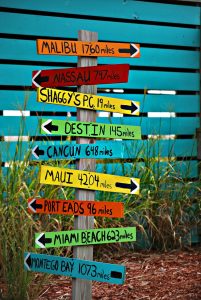Every once in a while, I wonder what I’m doing (ok, not so infrequently ;). And it’s easy to think it’s about applying what’s known about learning to the design of solutions. However, it’s more. It is about applying science results to designing improvements, but, it’s broader than learning, and not just individual. Here are some reflections on engineering solutions.
As I’ve probably regaled you with before, I was designing and programming educational computer games, and asking questions like “should we use spacebar and return, or number keys to navigate through menus?” (This was a long time ago.) I came across an article that argued for ‘cognitive engineering’, applying what we knew about how we think to the design of systems. Innately I understood that this also applied to the design of learning. I ended up studying with the author of the article, getting a grounding in what was, effectively, ‘applied cognitive science’.
Now, my focus on games has been on them as learning solutions, and that includes scenarios and simulation-driven experiences. But, when looking for solutions, I realize that learning isn’t always the answer. Many times, for instance, we are better off with ‘distributed‘ cognition. That is, putting the answer in the world instead of in our heads. This is broader than learning, and invokes cognitive science. Also, quite frankly, many problems are just based in bad interface designs! Thus, we can’t stop at learning. We truly are more about performance than learning.
In a sense, we’re engineers; applying learning and cognitive science to the design of solutions, (just as chemical engineering is about applying chemistry). Interestingly, the term learning engineering has another definition. This one talks about using the benefits of engineering approaches, such as data, and technology-at-scale, to design solutions. For instance, making adaptive systems requires integrating content management, artificial intelligence, learning design, and more.
Historically, our initial efforts in technology-facilitated learning did take teams. The technology wasn’t advanced enough, and it took learning designers, software engineers, interface designers and more to generate solutions like Plato, intelligent tutoring systems, and the like. I’ve argued that Web 1.0 took the integration of the tech, content design, and more, which usually was more than one person could handle. Now, we’ve created powerful tools that allow anyone to create content. Which may be a problem! The teams used to ensure quality. Hopefully, the shift back comes with a focus on process.
We can apply cognitive science to our own design processes. We’ve evolved many tools to support not making reliable mistakes: design processes, tools like checklists, etc. I’ll suggest that moving to tools that make it easy to produce content haven’t been scaffolded with support to do the right thing. (In fact, good design makes it hard to do bad things, but our authoring tools have been almost the opposite!) There’s some hope that the additional complexity will focus us back on quality instead of being a tool for quantity. I’m not completely optimistic in the short term, but eventually we may find that tools that let us focus on knowledge aren’t the answer.
I’m thinking we will start looking at how we can use tools to help us do good design. You know the old engineering mantra: good, fast, and cheap, pick 2. Well, I am always on about ‘good’. How do we make that an ongoing factor? Can we put in constraints so it’s hard to do bad design? Hmm… An interesting premise that I’ve just now resurrected for myself. (One more reason to blog!) What’re your thoughts?

